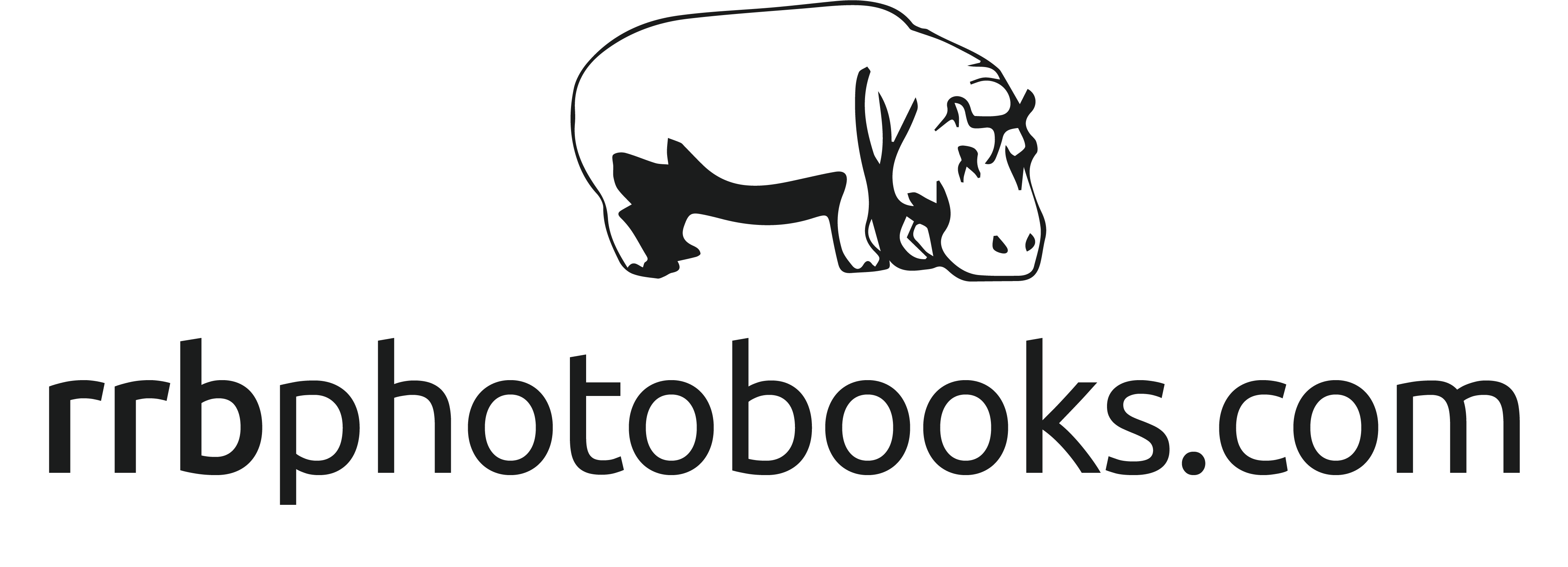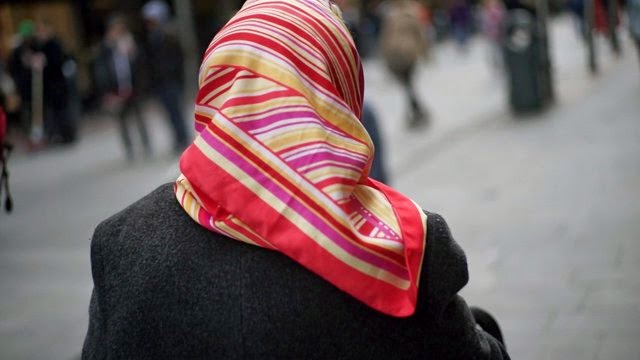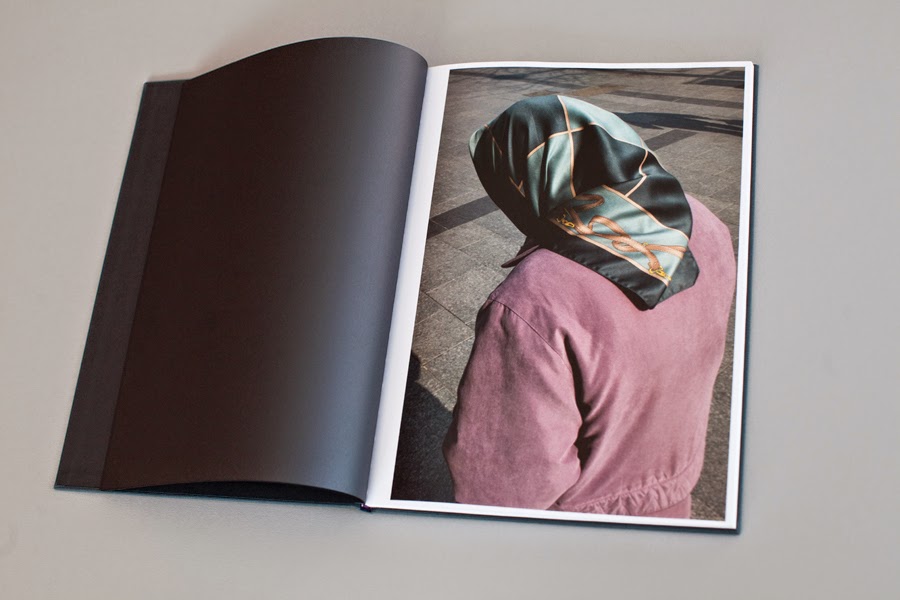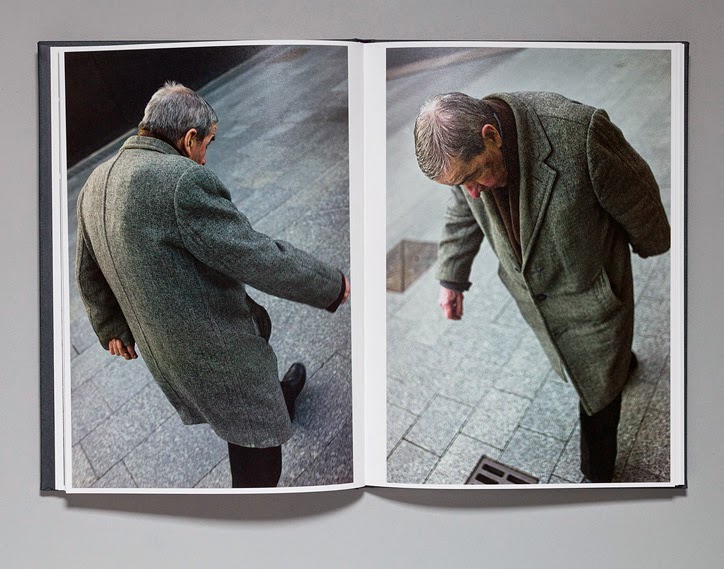Photobook Bristol Interviews: Eamonn Doyle
Tell us how you came into photography the first time – and how you made your way back into it.
I went to study Fine Art in Dublin in ‘87. During the first year we got exposed to various types of printmaking and photography. It was quite a limited introduction, but I was really drawn to the likes of Bill Brandt and Josef Koudelka. There was a darker edge to their images that really appealed to me. I transferred over to the Photography course for the final few years. There was more of a commercial focus to the course that kind of confused and discouraged me. After college I had a few aborted attempts in commercial photography, but the idea of working towards a brief or commission never appealed to me.I started shooting and editing super-8 music videos for local Dublin bands in the early 90s and quickly fell into the music world for the next 20 years, setting up record labels & distribution, a record shop, a clubnight and an electronic arts festival. I was also producing music, but for the most part I had become a reluctant arts administrator, which I was never really cut out for.
Programming the Arts festival reignited my interest in photography and as the festival began to wind down after 10 years I bought myself a camera and built a darkroom next to the recording studio.
Looking online we can only really have a look at the style of work you’ve shown us through ‘i’. How does it compare visually to other things you have done? What was the shift in thought?
The ‘i’ series seems a lot more methodical and focused than my other work, but essentially it’s coming from the same place, however there was a slight shift in both thought and technique.I had just got my hands on a small rangefinder camera for the first time. It makes much less noise and is a lot more discrete than my SLR camera so I started to move really close to the people I was photographing. The viewfinder is off to the side of the camera, so when shooting upright it raises the position of the lens, giving a slightly higher viewpoint.
My attraction to most of the characters in the book was primarily visual..looking from a purely graphic and abstract perspective I was trying to flatten and compress the people as much as possible into their surroundings, so it made sense to shoot from above and use the pavement and roads as backgrounds. Not showing the face for the most part helped to abstract things even more. An elderly face in a street photo can be quite loaded and clichéd at this stage, so for the most part I was trying to avoid that.
Beyond that, I’m mindful of the unknowability of any stranger you photograph. Living in the city centre, you have these brief urban encounters hundreds of times a week. The vast majority of human interactions we have during our lives are these fleeting moments, but they can be loaded with brief but quite powerful feelings of desire, disgust, or just total indifference. They don’t even have to be interactions. They can be just momentary observations. I’ve never had a desire to learn more about someone through photographing them and not much interest in in-depth photo essays. As a photographer with no particular message to express, I still wonder if there is a way to photograph these people in a way that says "I won’t gain knowledge of them by photographing them, but maybe something will come from my attempt to or maybe even my failure to"?
What made you think the photobook was the right vehicle ‘i’?
My first exposure to music was from my brother’s vinyl albums. So when I started to make music, it’s natural home was on vinyl. Similarly my first exposure to photography was through photobooks in the college library. It just goes without saying for me that I’ll initially work with the photobook format in mind.You cite Beckett as an influence on many levels – from the title ‘i’ to the existential way you approached the essence of the individuals through anonymity. What is it that drew you to this writer?
I find that difficult to answer. For someone who enjoys reading, talking about and learning about Beckett, I’m completely inept at articulating why he effects and resonates with me so much. English was never my strong point!The minimalist visual approach you have taken in ‘i’ also echoes that of Beckett, often only showing the backs of the people captured with no extraneous objects. How hard was it to eliminate any distracting details? Is Dublin a really tidy city?
[It was] very difficult actually. The odd time I managed to get it in one frame, but looking back through my contact sheets, most of the time it took 10-20 frames, and more often than not I never managed to get anything. They are nearly all shot on O’Connell Street in Dublin. It has really wide pavements, which helps with isolating people if you shoot from above. Most of the distracting details were caused by other people, but if you follow someone discretely for a minute or so you can usually find an isolated moment. I also shot mostly on Monday mornings just after the streets have been cleaned following the weekend.You say you shot from above to flatten the characters into the street, in many ways creating your own theatre of the absurd. Were you being Godot?
Mini theatres with just one character… It would be nice to just freeze everyone’s motion on the street and get to move them around as you wished, but I guess that would take away from the excitement of photographing things that actually happened. It must be great to be a novelist or playwright, but then I guess you’re burdened with infinite possibilities and decisions!But yes, I think with the ‘i’ series I really was trying to control and define the context of the characters. I had to wait and see what the street threw my way and then when I saw someone I had to go about pairing as much of the extraneous context away.
You have returned to photography after a long time away from it. I wonder if you feel that ‘i’ was something you could only make now….as opposed to when you were starting out….? Is there some sense of your own mortality reflected in these images with the Beckett-like approach ‘I can’t go on, I’ll go on’?
I’ve had a heightened sense of my own mortality for quite some time now, so I’m not sure that’s the main factor. It’s probably more to do with an acceptance of the futility of trying to express something, combined with the natural urge to express, which I think is at the heart of all Beckett’s work. The tension between the attempt to, and subsequent failure to express, and what happens in the act of attempting-then-failing is what interests me, the results of which are probably the most we can hope for.I suspect if I hadn’t stopped photographing for 20 years I wouldn’t have made this book. I would probably have had a much more complex relationship with photography at this stage which may not have allowed a book like ‘i’ to have surfaced.
You funded this book yourself and the edition of 750 sold out. What kept you going on this project? And will there be a second edition?
The original plan was to print an edition of 300, but with a slight tweak in page dimensions the printer managed to produce 750 for the same price. This allowed me to sell it for a much more affordable price which, combined with Martin Parr’s recommendation meant they sold out way faster than I could ever have hoped for!I’ve no intention of making a second edition. It was sold as an edition of 750 so I’d rather leave it at that. The images have taken on a new life through print sales, which has been great.
What are you reading at the moment - and will this give us a clue about your next photobook project? For example....<Pause> Pinter?
I have a few on the go at the moment:‘The Stolen Village’, a true story about an entire Irish village taken as slaves by Barbary pirates to Algiers in the 1600s.
‘Connemara – The Last Pool of darkness’, by Tim Robinson, one of the best non-fiction writers you’re likely to read.
‘The Atlantean Irish’ – a look at Ireland’s Oriental and Maritime Heritage.
They all relate to a photo and music project I have in mind, loosely based on Ireland’s historical connections along the Atlantic from North Africa to Iceland. But it’s at the very early stages and won’t surface for at least another year. I have two more Dublin street books more or less finished, which I hope to self-publish over the new few months.
Speaking of Pinter..He’s play The Caretaker is on here in Dublin at the moment. Loved it!!
If we asked to photograph your back what coat would you choose to wear?
My mother’s been at me to “go and get yourself a decent coat” for the past 20 years … I’m guessing now might be a good time!We have a signed edition of 'i' available in our shop.
You can also view this interview on the Photobook Bristol website >>
Biography: Born in Dublin in 1969, Eamonn Doyle graduated with a Diploma in Photography from IADT in 1991. He spent much of the next twenty years producing music and working in the independent music business, founding the Dublin Electronic Arts Festival (DEAF) alongside the record labels D1 Recordings and Dead Elvis.
He returned to photography in 2008. His debut photobook 'i', described by Martin Parr as 'the best street photo book in a decade' was published in March 2014. Most of his work has been produced in and around the Dublin city centre location where he has lived for the past 20 years.





